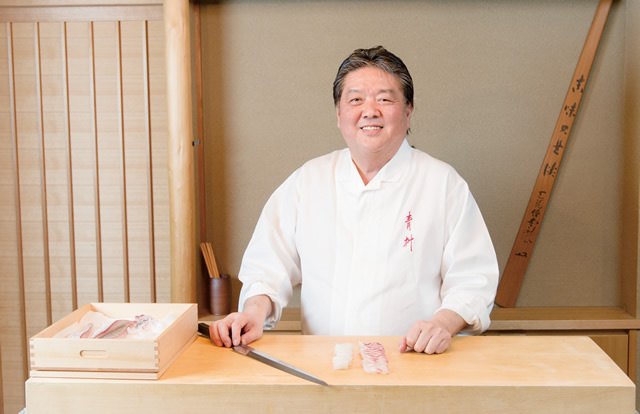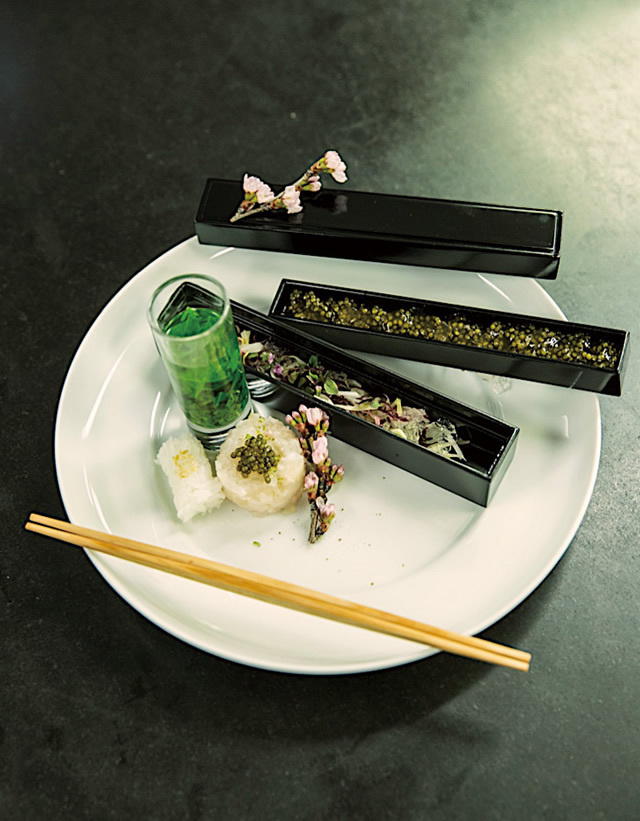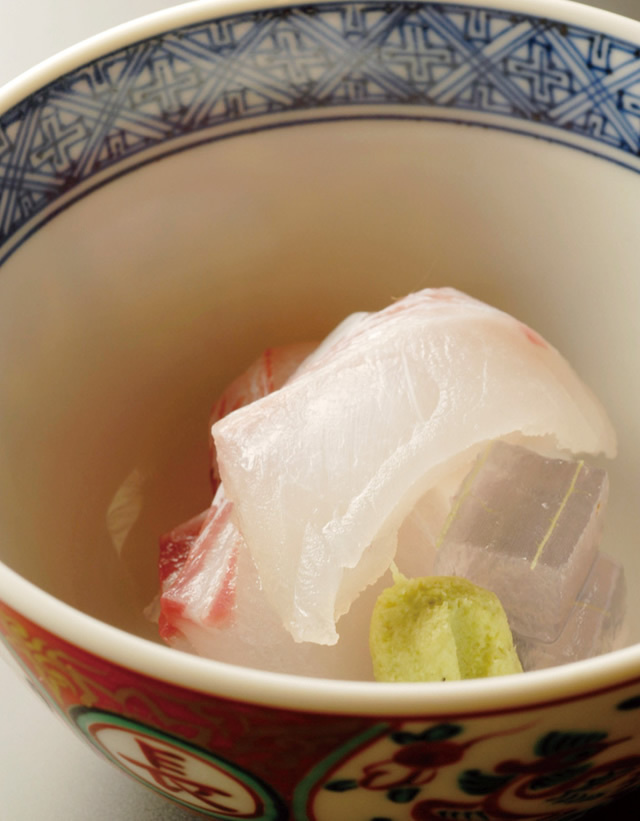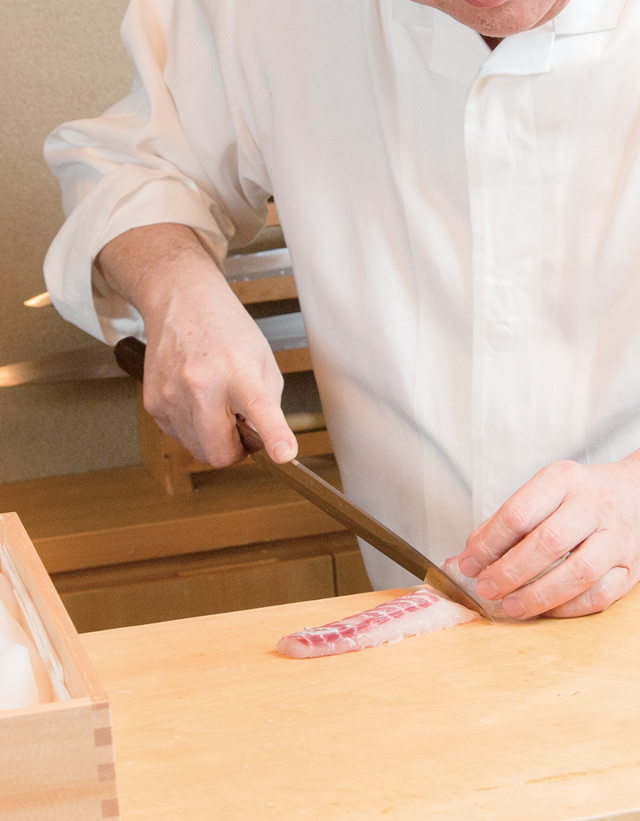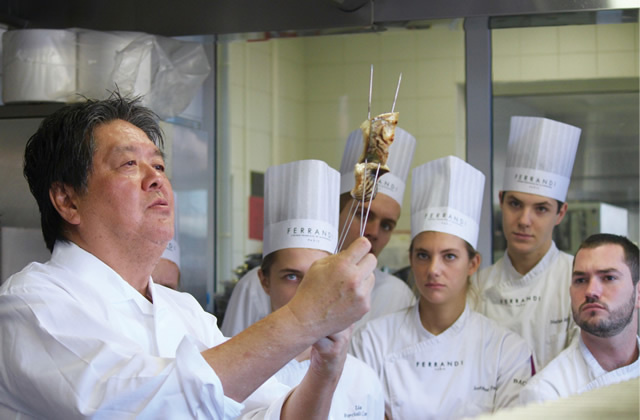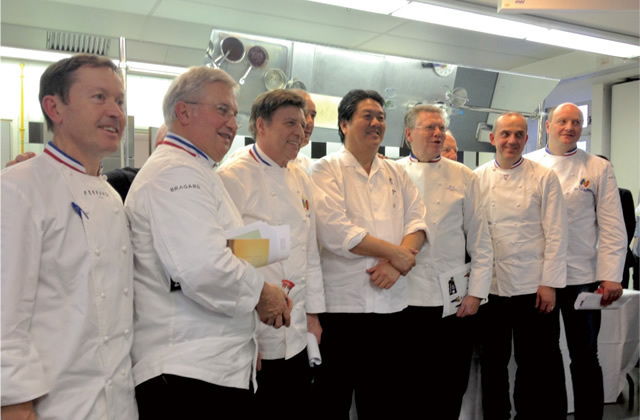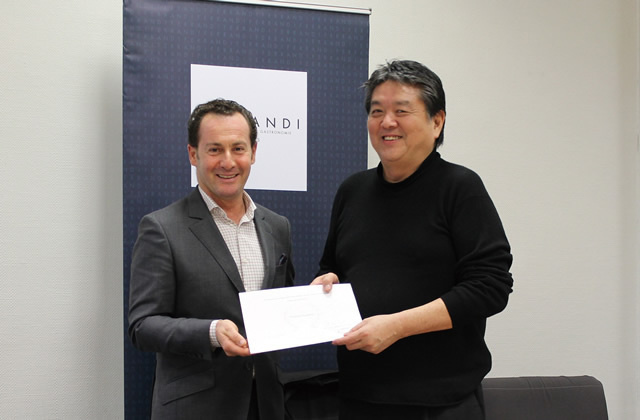Hirohisa Koyama
Born into the family that runs Aoyagi, a long-established traditional Japanese restaurant in Tokushima Prefecture. After training at the famed Japanese restaurant Kitcho in Osaka, took over the family business and became the third-generation owner of Aoyagi. In recognition of his work organizing Japanese food fairs in France at the invitation of top hotels such as the Hôtel Plaza Athénée and the Ritz Paris and his contribution to culinary exchange between the two countries, the French government bestowed on him the title of Officer of the Order of Agricultural Merit in in 2010. In February 2017, he was appointed as the first non-French member of the strategy committee chaired by Joel Robuchon at Ferrandi.
“Washoku, traditional dietary cultures of the Japanese” was inscribed on the UNESCO Representative List of the Intangible Cultural Heritage of Humanity in December 2013. This has sparked greater interest worldwide in healthy Japanese cooking, known for making minimum use of oils and fats. The European epicenter of the Japanese food boom is France, thanks in no small part to the efforts of Hirohisa Koyama, who has spent the past 25 years conveying the essence of Japanese cuisine through his lectures at the prestigious Ferrandi school of culinary arts in Paris. One of Japan’s top chefs, Koyama is famed for his mastery of single-edged kitchen knives, with which he cuts ingredients beautifully and deliciously, and his culinary finesse in combining his original ideas with traditional techniques.
Koyama’s activities as an ambassador of washoku in France began in 1992, when he gave the first-ever lecture on Japanese food to be delivered at Ferrandi. He reflects on his thoughts at the time: “Japanese chefs who had studied the secrets of French cooking in France were finding success in Japan. I wanted in return to introduce Japanese culinary techniques to France.” The only tools of his trade that he brought from Japan were his knives and soy sauce. “I will present you with genuine Japanese cuisine using solely French ingredients,” he wrote in the invitation sent to noted French chefs. Although he was little known in France at the time, 86 leading chefs packed the lecture room. One of the attendees was Pierre Hermé —one of the most renowned pâtissiers in France—who said of his first-hand encounter with Koyama’s knife skills, “I will never forget discovering that the manner in which the knife is applied alone can change the taste of sashimi so dramatically.” Koyama, for his part, was struck by the sheer passion of these foremost chefs for culinary inquiry.
His prolonged experience teaching Japanese culinary techniques to the French has been valuable for Koyama in that it has prompted him to take a sharper look at Japanese cuisine. Conveying his skills and his spirit to people of a different culture and language calls for the ability to explain these things logically.
In both France and Japan, culinary techniques have been honed through centuries of tradition. The chefs of both countries, together with the artisans who produce traditional foodstuffs and tableware, have kept alive artistic dietary cultures. “French cuisine features great sophistication in presenting food beautifully,” Koyama says. “Meanwhile, the essence of Japanese cuisine lies in the use of single-edged knives. Chefs of both countries learning from one another and incorporating key techniques from one another’s discipline to rise to greater culinary heights—that, I believe, will help develop both cuisines and constitute cultural exchange in the truest sense. It is my hope that I can help broaden the reach of traditional cuisine across differences of nationality and genre and bring Japan’s healthy and tasty dietary culture to people across the world.”

